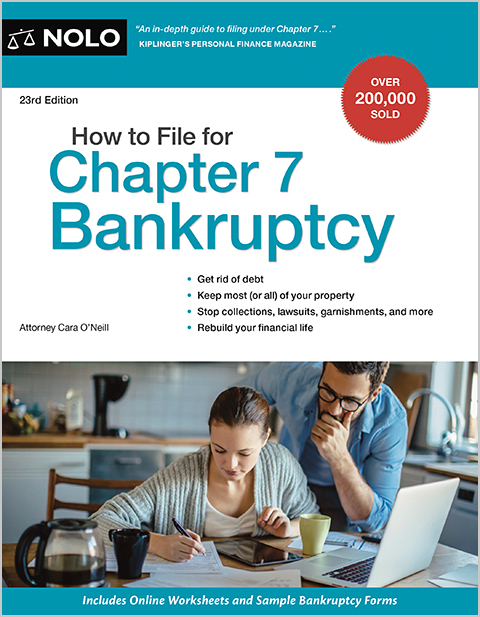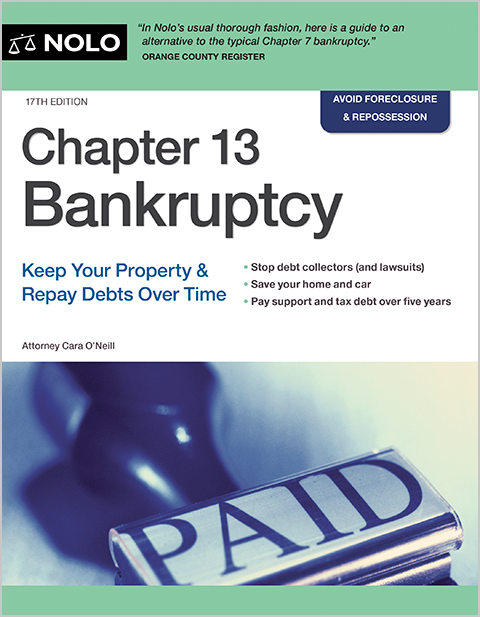A complete guide for protecting your 401(k), IRA, and pension savings during bankruptcy proceedings.
It's normal to worry about losing your hard-earned retirement savings in bankruptcy. Fortunately, most retirement accounts are protected in bankruptcy. Whether you have a 401(k), IRA, pension, or other retirement plan, specific federal exemptions shield these funds from creditors during both Chapter 7 and Chapter 13 bankruptcy proceedings.
This article explains the increases in IRA and 401(k) bankruptcy exemption limits as of April 1, 2025. You'll also learn the differences between various retirement account protections and why withdrawing retirement funds before filing bankruptcy is unnecessary and can jeopardize long-term financial security.
- 2025 IRA Bankruptcy Exemption Limits: $1,711,975 Protection Cap
- 401(k) Bankruptcy Protection: Unlimited Coverage for ERISA-Qualified Plans
- Protecting ERISA-Qualified Retirement Funds and IRA Balances During Bankruptcy
- You Can Keep (Exempt) Most Retirement Accounts
- Fully Protected Retirement Accounts
- Withdrawn Retirement Benefits Aren't Exempt
- Chapter 7 vs Chapter 13: How Retirement Income Affects Your Bankruptcy Case
- Which Chapter Should You Choose?
- Need More Bankruptcy Help?
2025 IRA Bankruptcy Exemption Limits: $1,711,975 Protection Cap
$1,711,975 per person as of April 1, 2025. This amount is not per individual account, but rather applies to the combined total of all IRA accounts. (11 U.S.C. § 522(n); amount valid April 1, 2025, to March 31, 2028.)
401(k) Bankruptcy Protection: Unlimited Coverage for ERISA-Qualified Plans
Yes, ERISA-qualified retirement accounts receive unlimited bankruptcy protection. This includes 401(k)s, 403(b)s, pension plans, and profit-sharing plans. Unlike IRAs, there is no dollar limit on this exemption. These funds are entirely excluded from your bankruptcy estate as long as they remain in the qualified account.
Protecting ERISA-Qualified Retirement Funds and IRA Balances During Bankruptcy
In most cases, when you file for Chapter 7 or Chapter 13 bankruptcy, you get to keep your pension and retirement plan funds. But a few limitations exist. When considering bankruptcy, it's important to learn the essential rules governing your retirement plan, including when you can keep or "exempt" your retirement account balance and how to avoid losing retirement funds.
You Can Keep (Exempt) Most Retirement Accounts
You don't lose everything you own when filing for bankruptcy. You can use bankruptcy exemptions to protect property you need to work and live, such as some equity in a home, a modest car, and household belongings.
Fortunately, virtually all of your personal ERISA-qualified retirement accounts and pension plan funds are excluded from bankruptcy (except for inherited accounts). But the protection is limited. ERISA-qualified retirement accounts and pension plan funds are protected from creditors as long as the funds remain in the actual account. Funds are treated differently after being withdrawn, and you stand a greater chance of losing them. You'd need to protect the funds with a cash or wildcard exemption.
Some states also have exemptions protecting retirement accounts. Learn more about your state's exemptions.
Fully Protected Retirement Accounts
With a few exceptions, bankruptcy exemption amounts for retirement accounts are unlimited, so the entire amount of the retirement account is protected. Plans subject to this exemption include ERISA-qualified pension plans, such as:
- 401(k)s
- 403(b)s
- IRAs (Roth, SEP, and SIMPLE, but see limitations discussed below)
- Keoghs
- profit-sharing plans
- money purchase plans, and
- defined-benefit plans.
Keep in mind that a general savings account, investment account, or stock option plan won't be protected if it isn't an ERISA-qualified plan—and many are not.
Also, a few states have exemptions that protect bank and investment account funds. Even when they do, the coverage is minimal. For instance, $300 isn't uncommon. You'll lose unprotected funds in both Chapter 7 and Chapter 13 bankruptcy (the money will be used to pay creditors).
Learn about protecting cash in Chapter 7 bankruptcy.
Withdrawn Retirement Benefits Aren't Exempt
Although the funds in your retirement accounts are exempt from creditors (subject to the limitations discussed above), retirement benefits paid to you as income aren't exempt. Here's how retirement income factors in:
- Chapter 7 bankruptcy. If you receive a monthly payment from a pension or retirement account, the court will consider it income that gets figured into your Chapter 7 means test qualification. In a Chapter 7 bankruptcy, the bankruptcy court cannot take any retirement benefits that are necessary for your support, but it could take amounts over and above what you need for your support and use it to repay your creditors.
- Chapter 13 bankruptcy. In this chapter, retirement income will help determine what portion of your unsecured debts you must repay in your Chapter 13 plan.
Understanding what will happen to your retirement funds in bankruptcy is crucial. Many people at the "withdrawing retirement funds" stage of life are often judgment proof and don't need to file for bankruptcy. It's prudent to protect your interests by meeting with a qualified bankruptcy lawyer.
Chapter 7 vs Chapter 13: How Retirement Income Affects Your Bankruptcy Case
Once you determine whether your qualified retirement account balances will be protected in bankruptcy, you'll need to determine whether the income you receive from these accounts affects your ability to qualify. The more retirement income you receive, the less likely you'll qualify for Chapter 7, and the higher your monthly payment will be in Chapter 13.
High retirement income could disqualify you from Chapter 7. Chapter 7 qualification requires passing the Chapter 7 means test. Your retirement distributions from 401(k)s, IRAs, and pensions will be used for Chapter 7 qualification. However, Social Security benefits don't count toward means test income.
Chapter 13 requires a steady income to fund a repayment plan. Retirement income typically qualifies as regular income. All retirement income, including Social Security, is considered when determining the monthly payment amount you must pay creditors through the Chapter 13 plan.
Which Chapter Should You Choose?
Here's when Chapter 7 might work:
- your income is all Social Security benefits, or is low enough to pass the means test
- you can protect all your property with bankruptcy exemptions, and
- you want to discharge debt in a matter of months without repaying creditors.
Chapter 13 might be the better or only option when:
- your income exceeds Chapter 7 limits, or
- you want to protect property you'd lose in Chapter 7.
Important point. Never withdraw retirement funds to pay creditors before filing bankruptcy. Not only do these funds lose protection once withdrawn, but you also don't want to waste money paying off debts you can discharge in bankruptcy.
Need More Bankruptcy Help?
Did you know Nolo has made the law accessible for over fifty years? It's true, and we wholeheartedly encourage research and learning. You can find many more helpful bankruptcy articles on Nolo's bankruptcy homepage. For instance, Nolo articles will explain what bankruptcy can do, what you'll want to avoid before filing for bankruptcy, and more. Information needed to complete the official downloadable bankruptcy forms is on the Department of Justice U.S. Trustee Program website.
However, online articles and resources can't address all bankruptcy issues and aren't written with the facts of your particular case in mind. The best way to protect your assets in bankruptcy is by hiring a local bankruptcy lawyer.
- 2025 IRA Bankruptcy Exemption Limits: $1,711,975 Protection Cap
- 401(k) Bankruptcy Protection: Unlimited Coverage for ERISA-Qualified Plans
- Protecting ERISA-Qualified Retirement Funds and IRA Balances During Bankruptcy
- You Can Keep (Exempt) Most Retirement Accounts
- Fully Protected Retirement Accounts
- Withdrawn Retirement Benefits Aren’t Exempt
- Chapter 7 vs Chapter 13: How Retirement Income Affects Your Bankruptcy Case
- Which Chapter Should You Choose?
- Need More Bankruptcy Help?

